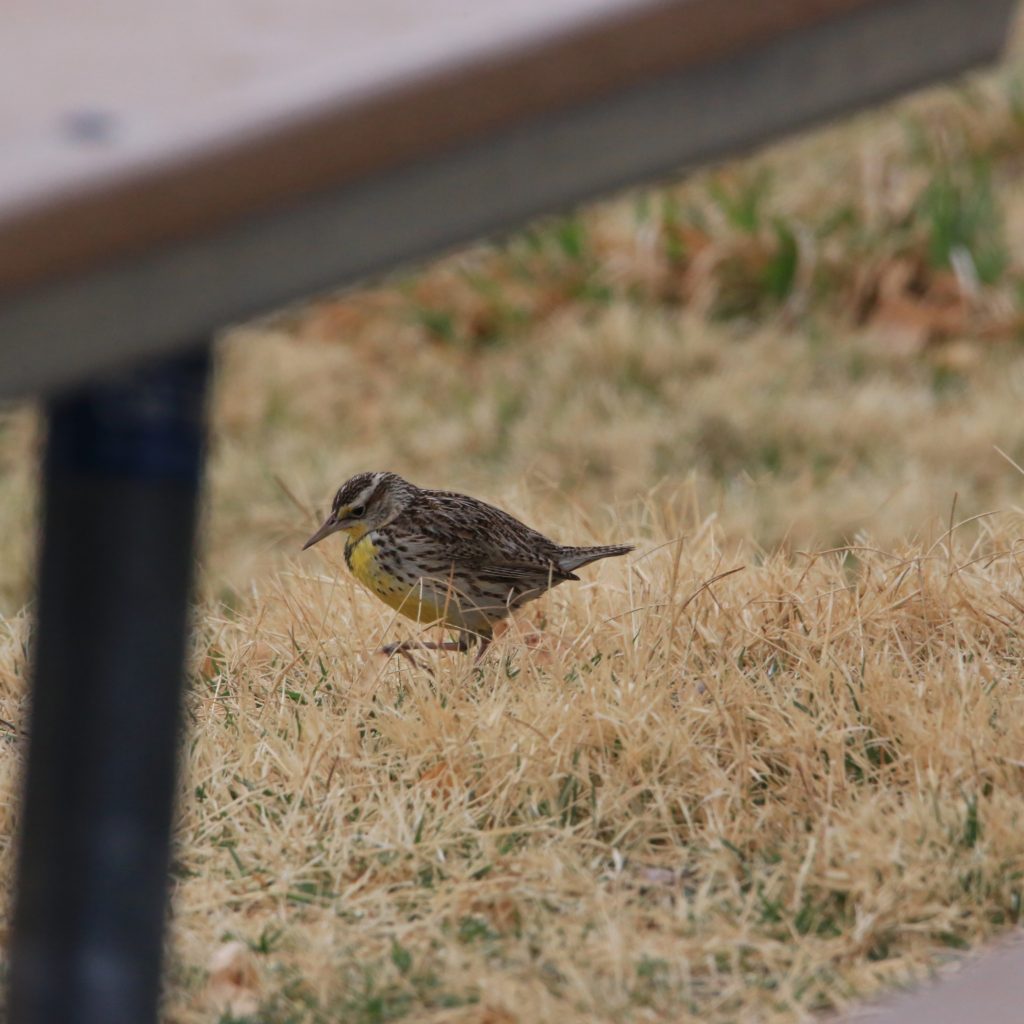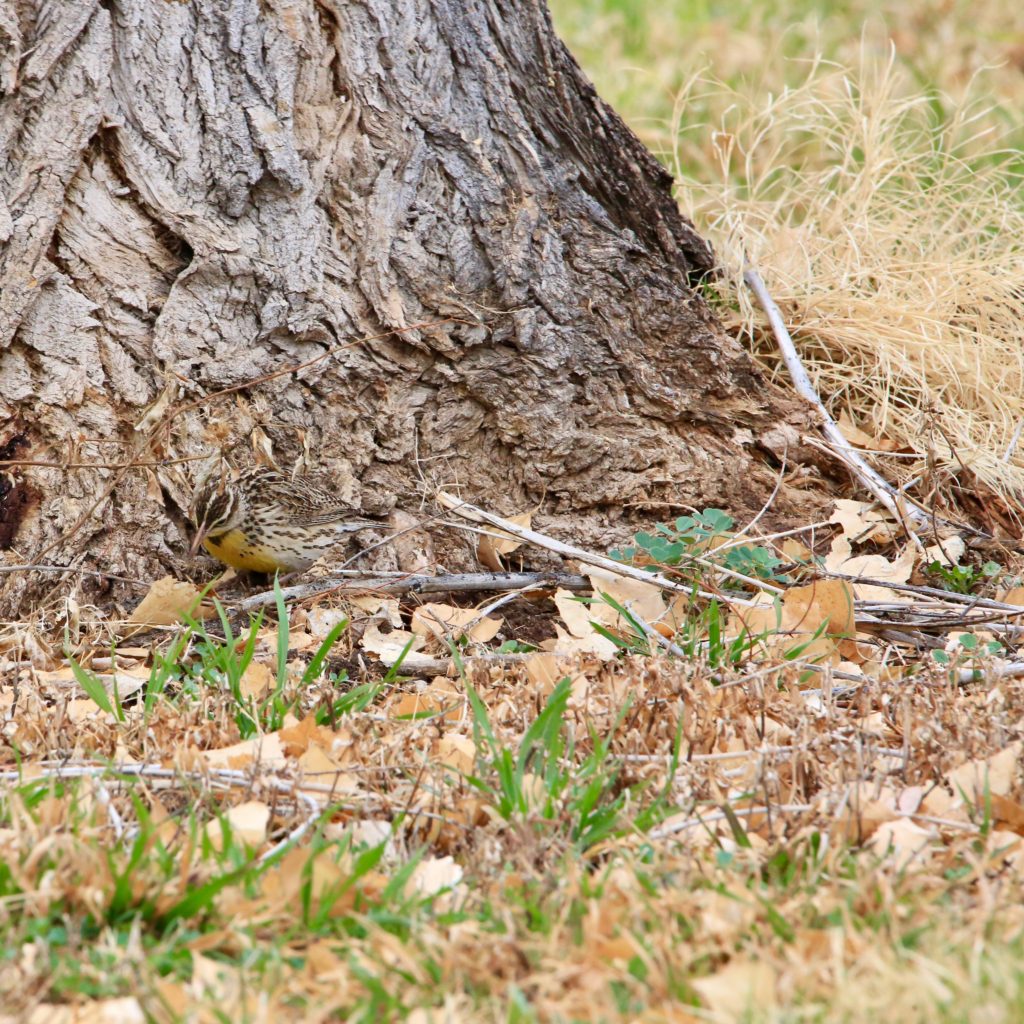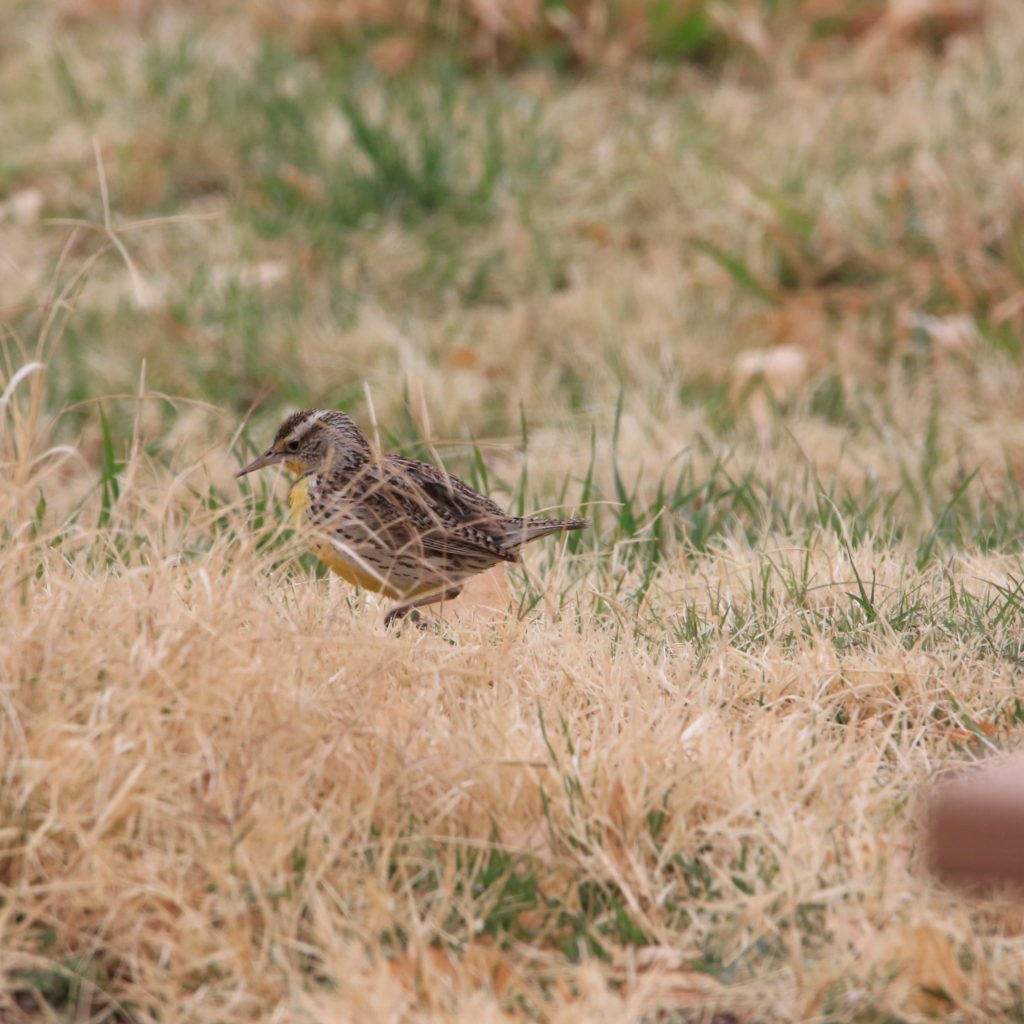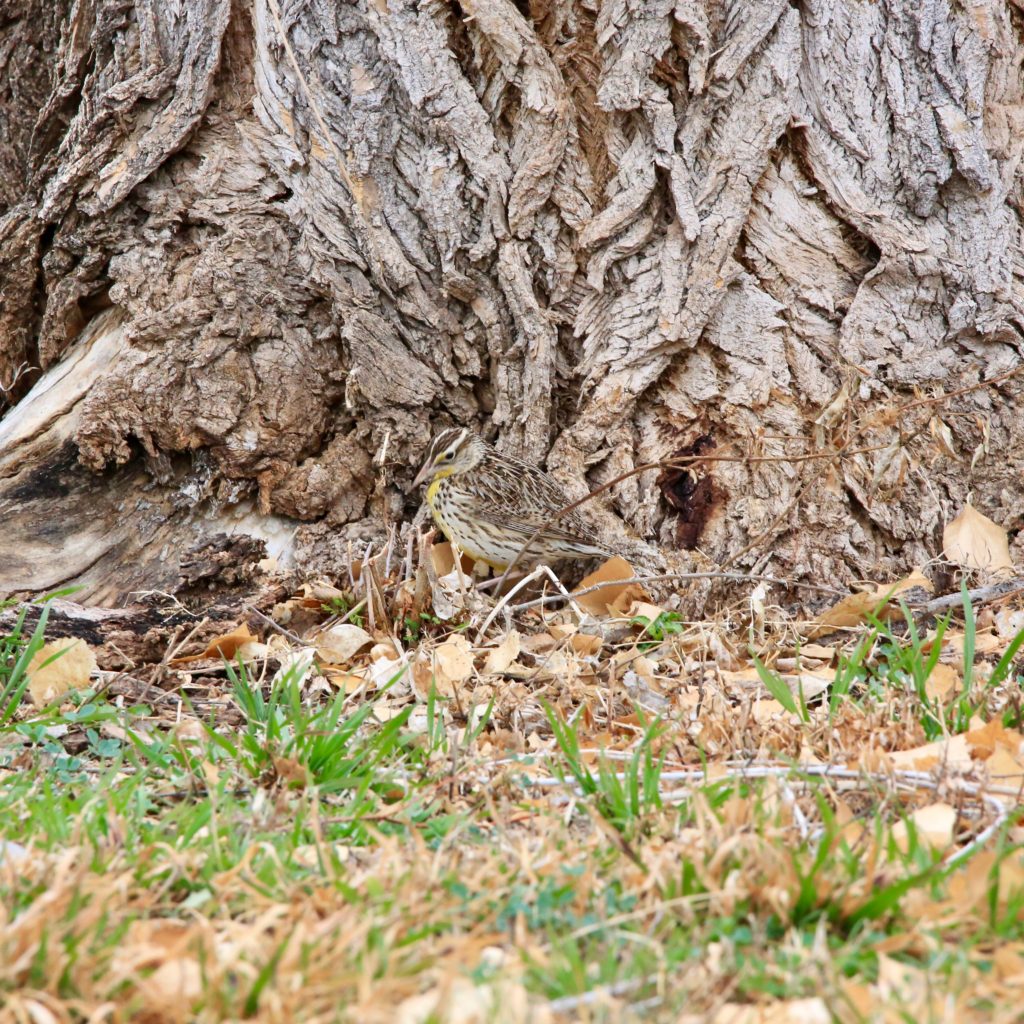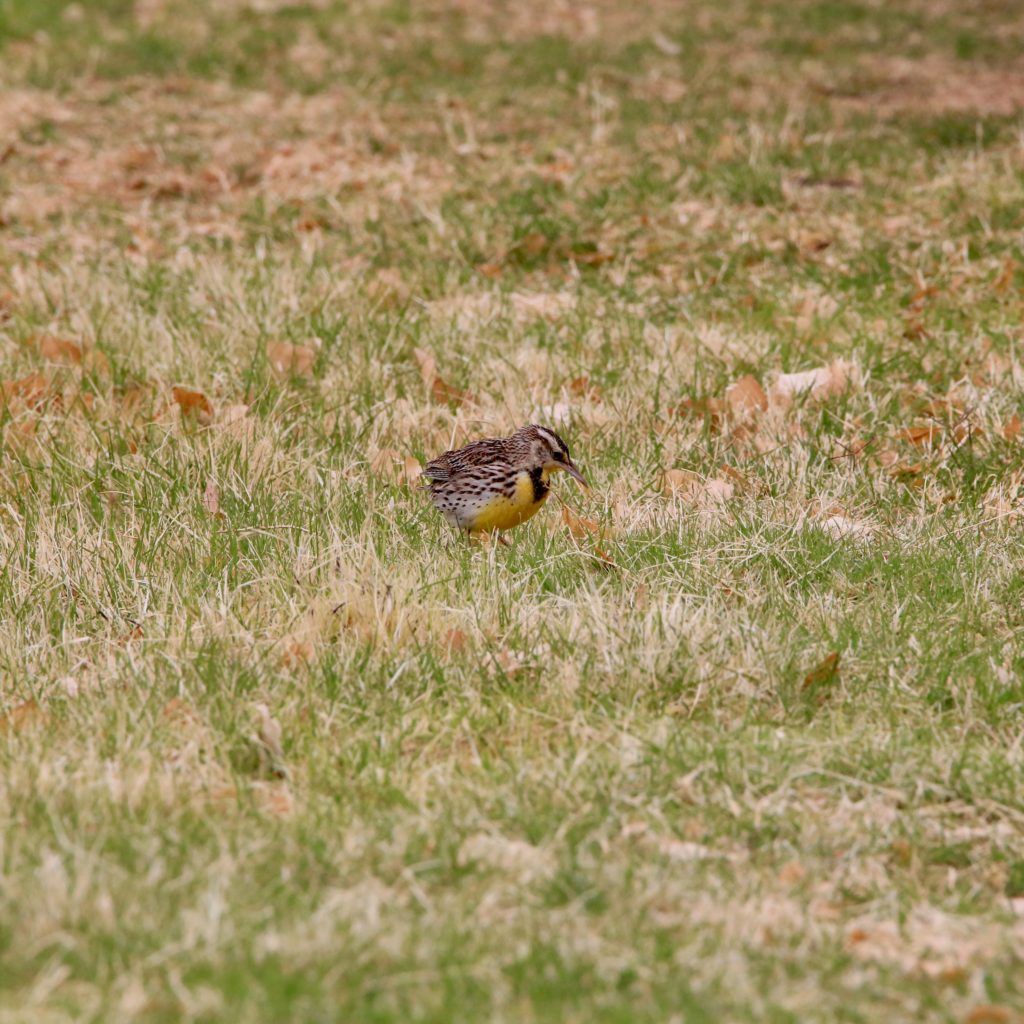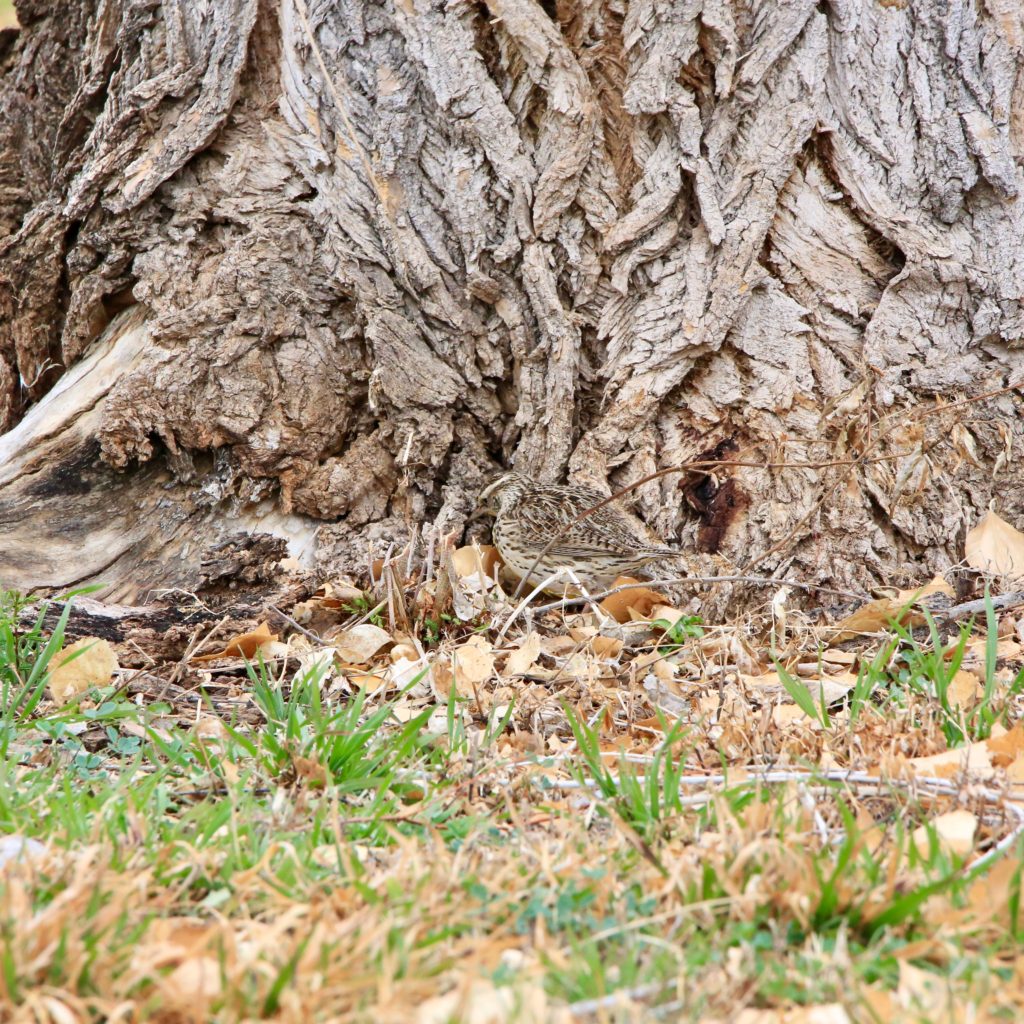
Eastern Meadowlark
A Eastern Meadowlark is a fun bird to see while bird watching. Below are some tips to help you identify Eastern Meadowlarks. We have also put together a list of fun Eastern Meadowlark t-shirts, Eastern Meadowlark bird patches, bird houses, bird feeders, binoculars, stickers and other fun bird watching items.
About Eastern Meadowlarks
This is a colorful bird that occurs from North to South America. It is mainly grouped with the icterids, which are a family of colorful birds.
Description and Identification
Eastern Meadowlarks are chunky, medium-sized birds with an appearance similar to Western Meadowlarks. They are members of the New World Blackbird family. A unique and captivating feature of these birds is the bold V-shaped, black necklace on their neck. Male adult meadowlarks are 7.5-11 inches long, with a wingspan of 14-16 inches. Females are considerably smaller, paler, and have a narrower breast band. All Eastern Meadowlarks have a light brown striped head and a long pointed bill. The simplest way to differentiate Eastern Meadowlarks from Western Meadowlarks is from their clear melancholic whistles. This song is much simpler than the complex and flute song of the Western Meadowlarks.
Eastern Meadowlark Size
Length: 19 to 28 cm
Weight: 76 to 150 g
Wingspan: 35 to 40 cm
Both the males and females are of averagely the same size.
Eastern Meadowlark Appearance
Their plumage is mainly black with bits of yellow and orange across their bodies. For adults, they have a black “V” that contrasts with their yellow underside. They also have white flanks with black streaks. Their upper parts are mainly brown have black streaks directed towards the back. The head has light brown and black stripes and their bill is also long and black.
Eastern Meadowlark Life and Behavior
They are social birds that live in groups. During mating season, the males attract the females by putting on displays in the air and on land. When the females accept the males, they move into the male’s nesting ground. They are a polygamous species and the male may have more than one nesting female inside its nesting ground.
As a result, the males violently protect their nesting ground from external threats, which includes other Eastern Meadowlark males.
Nesting occurs during the months of summer and the males build their nests on the ground, hiding them in the midst of tall grass and other tall vegetation. The nests are covered with a roof made from grass for extra protection.
Eastern Meadowlark Feeding
The birds mainly forage by poking their bills in the ground. They mainly feed on arthropods, but also eat seeds and berries. In winter, they go out and feed in flocks to retain body heat.
During warmer seasons, these birds prey on invertebrates they spot loitering in the grass. These
include spiders, ants, beetles, crickets, katydids, and caterpillars. When spring arrives, they shift to
more plant-based material such as left-over grains from fields, or a variety of seeds that are
accessible. Seeds and grains eaten during autumn and winter make up around one-fourth of their
diet. In winters, they travel in flocks, foraging for insects and seeds.
Eastern Meadowlark Habitat
They are mostly found in grasslands, hay and pastures, and prairie fields. It booms in grassland and farmland areas and has shown a liking to tall grass.
Eastern Meadowlarks nest and breed in open pastures, hay and alfalfa fields, tall grasslands,
overgrown fields, and roadsides. Most of these birds prefer areas filled with grass and vegetation.
As an exception to other Eastern Meadowlarks, the meadowlarks from the Southwest live in arid
desert grasslands. In winter, migrating Eastern Meadowlarks can be seen in salt marshes and old
fields.
Range and Migration
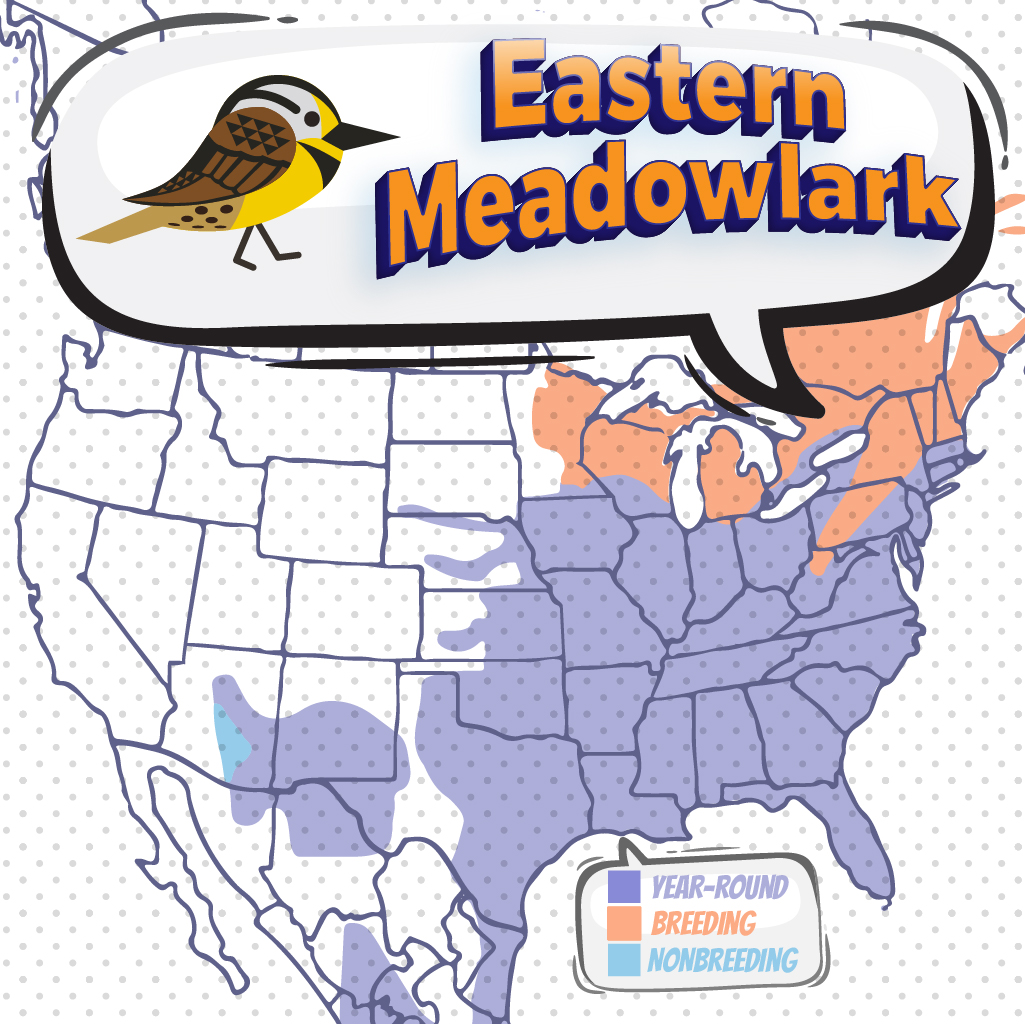
Eastern Meadowlarks are social songbirds that are widespread in Eastern regions of North
America. Some races of these birds are also common in Central America, Cuba, and Northern
South America. Eastern Meadowlarks are either short-distance migrants or permanent residents.
Only the birds that live in the northernmost part of their breeding range migrate, as they need to
travel south in order to forage. By the end of November, these migrating meadowlarks depart for
wintering areas and return by the time the snow melts in spring.
Nesting
These birds nest during summer months with their nest placed on the ground in areas where
dense, tall grasses grow. For extra protection, the nest is covered with a roof constructed from
the grass. Several nesting females might be present on the breeding territory of the males. Male
Eastern Meadowlarks mark and defend their breeding territory by singing. They impress the
females through an elaborate courtship display. First, the males face the females, then they puff
their chest feathers out and point their bills up to display the majestic V-shaped black streak on
their neck. Following this, they spread their tails out wide and flick their wings, if excited they might
also add a little jump at the end of this display. Both males and females feed the younglings, but
the contribution by the females is more. Two broods of younglings are raised every year.
Ornithology
Bird Watching Academy & Camp Subscription Boxes
At Bird Watching Academy & Camp we help kids, youth, and adults get excited and involved in bird watching. We have several monthly subscription boxes that you can subscribe to. Our monthly subscription boxes help kids, youth, and adults learn about birds, bird watching, and bird conservation.
Bird Watching Binoculars for Identifying Eastern Meadowlarks
The most common types of bird watching binoculars for viewing Eastern Meadowlarks are 8×21 binoculars and 10×42 binoculars. Bird Watching Academy & Camp sells really nice 8×21 binoculars and 10×42 binoculars. You can view and purchase them here.
Eastern Meadowlark T-shirts
If you love the Eastern Meadowlark you should purchase a Bird Watching Academy & Camp T-shirt. To help support bird conservation we donate 10 percent to bird conservation activities.
Eastern Meadowlark Iron On Patches
Kids, Youth, and Adults love to collect our Bird Watching Academy & Camp iron on patches. Our bird watching patches help you keep track of the birds you have seen an identified. You can also display the patches on our Bird Watching Academy & Camp banners.
The Eastern Meadowlark is a great iron on patch to start your collection with. The patches are durable and can be sewn on or ironed on to just about anything.
Eastern Meadowlark Stickers
Stickers are a great way for you to display your love for bird watching and the Eastern Meadowlark. We sell a monthly subscription sticker pack. The sticker packs have 12 bird stickers. These sticker packs will help your kids learn new birds every month.
Bird Feeders For Eastern Meadowlark
There are many types of bird feeders. Here are our favorite bird feeders for your backyard. We use all of these bird feeders currently. Kids will have a great time watching birds eat at these bird feeders. Using this collection of bird feeders will provide a wide variety and many types of birds.
Best Bird Houses for Eastern Meadowlark
There are many types of bird houses. Building a bird house is always fun but can be frustrating. These 4 bird houses have become our favorites. Getting a bird house for kids to watch birds grow is always fun. We spent a little extra money on these bird houses but they have been worth the higher price and look great.


